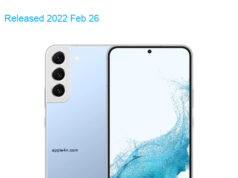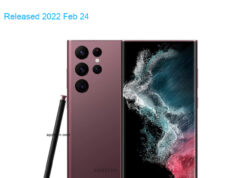| Brand | Samsung |
| Model | SM-A125W Galaxy A12 2020 TD-LTE CA 32GB |
| Released | 2021 Apr |
| Announced | 2021 Apr 1 |
| Hardware Designer | Samsung Electronics |
| Codename | Samsung A125 |
| OEM ID | A125WZKAXAC |
| General Extras | Haptic touch feedback |
| Device Category | Smartphone |
| Width | 75.8 mm |
| Height | 164 mm |
| Depth | 8.9 mm |
| Dimensions | 2.98×6.46×0.35 inches |
| Mass | 205 g |
| Platform | Android |
| Operating System | Google Android 11 (R) |
| Software Extras | Voice Command , Navigation software , Face Recognition |
| CPU Clock | 2320 MHz |
| CPU | MediaTek Helio G35 MT6765V/CB, 2020, 64 bit, octa-core, 12 nm, IMG PowerVR GE8320 GPU |
| RAM Type | Yes |
| RAM Capacity (converted) | 3 GiB RAM |
| Non-volatile Memory Interface | eMMC 5.1 |
| Non-volatile Memory Capacity (converted) | 32 GB ROM |
| Display Hole | 1-hole |
| Display Diagonal | 165.5 mm |
| Resolution | 720×1600 |
| Horizontal Full Bezel Width | 7.88 mm |
| Display Area Utilization | 82.5% |
| Pixel Density | 269 PPI |
| Display Type | Color PLS TFT LCD display |
| Number of Display Scales | 16.8M |
| Scratch Resistant Screen | Yes |
| Graphical Controller | PowerVR GE8320 |
| GPU Clock: | 680 MHz |
| A/V Out | No |
| Microphone(s) | stereo |
| Loudspeaker(s): | mono |
| Audio Output: | 3.5mm |
| Supported Cellular Bands | GSM850 , GSM900 , GSM1800 , GSM1900 , UMTS2100 (B1) , UMTS1900 (B2) , UMTS1700/2100 (B4) , UMTS850 (B5) , UMTS900 (B8) , CDMA800 (BC10) , LTE2100 (B1) , LTE1900 (B2) , LTE1800 (B3) , LTE1700/2100 (B4) , LTE850 (B5) , LTE2600 (B7) , LTE900 (B8) , LTE700 (B12) , LTE700 (B13) , LTE700 (B14) , LTE800 (B20) , LTE700 (B29) , LTE2300 (B30) , TD-LTE2600 (B38) , TD-LTE2500 (B41) , LTE1700/2100 (B66) , LTE600 (B71) bands |
| Supported Cellular Data Links | GPRS , GPRS C12 , EDGE , EDGE MSC33 , UMTS , HSUPA , HSUPA 5.8 , HSDPA , HSDPA 14.4 , HSPA+ 21.1 , DC-HSDPA 42.2 , LTE , LTE 100/50 , LTE 150/50 data links |
| SIM Card Slot | Nano-SIM (4FF) |
| Complementary Phone Services | Voice transmission , Voice speaker , Vibrate , Speakerphone , ANC , HD Voice , VoLTE |
| Sec. Supported Cellular Networks: | No |
| Touchscreen Type | Capacitive multi-touch screen |
| Expansion Interfaces | TransFlash , microSD , microSDHC , microSDXC |
| USB | USB 2.0 |
| USB Services | USB charging , USB fast charging , USB Host , USB OTG 1.3 , USB PD |
| USB Connector | USB C reversible |
| Max. Charging Power | 15.0 W |
| Bluetooth | Bluetooth 4.2 |
| Wireless LAN | 802.11a , 802.11b , 802.11e , 802.11i , 802.11g , 802.11n , 802.11r , 802.11ac |
| Wireless Services | Wi-Fi Direct , Wi-Fi Tethering , Wi-Fi Calling |
| NFC | NFC A , NFC B |
| FM Radio Receiver | FM radio (76-108 MHz) with RDS |
| Complementary Satellite Services | Simultaneous GPS , A-GPS , Geotagging , QuickGPS |
| Supported GLONASS protocol(s) | L1OF |
| Supported Galileo service(s) | E1 |
| Camera Placement | Rear |
| Camera Image Sensor | BSI CMOS |
| Number of effective pixels | 15.9 MP camera |
| Aperture (W) | f/1.80 |
| Zoom | 1.0 x optical zoom |
| Focus | PD AF |
| Video Recording | 1920×1080 pixel |
| Flash | single LED |
| Camera Extra Functions | Pixel unification , HDR photo , Red-eye reduction , Slow motion video , Burst mode , Touch focus , Panorama Photo , Face detection , Face tagging , Smile detection , Face retouch |
| Aux. Camera Image Sensor | BSI CMOS |
| Aux. Camera Number of Pixels | 4.9 MP aux. cam |
| Aux. Camera Aperture (W) | f/2.20 |
| Aux. Camera Extra Functions | HDR photo , Burst mode , Panorama Photo , Face detection , Face tagging , Smile detection |
| Aux. 2 Camera Image Sensor | CMOS |
| Aux. 2 Camera Number of Pixels | 1.9 MP aux. 2 cam |
| Aux. 2 Camera Aperture (W) | f/2.40 |
| Aux. 3 Camera Image Sensor | Mono CMOS |
| Aux. 3 Camera Number of Pixels | 1.9 MP aux. 3 cam |
| Aux. 3 Camera Aperture (W) | f/2.40 |
| Aux. 4 Camera Image Sensor | No |
| Secondary Camera Placement | Front |
| Secondary Camera Sensor | BSI CMOS |
| Secondary Camera Number of pixels | 8.0 MP sec. cam |
| Secondary Aperture (W) | f/2.20 |
| Secondary Video Recording | 1920×1080 pixel |
| Secondary Camera Extra Functions | HDR photo , Burst mode , Panorama Photo , Face detection , Face tagging , Smile detection , Face retouch |
| Sec. Aux. Cam. Image Sensor | No |
| Built-in accelerometer | Yes |
| Additional sensors | Barometer , FP sensor , L sensor , P sensor |
| Protection from solid materials | Yes |
| Protection from liquids | Yes |
| Battery | Li-ion |
| Nominal Battery Capacity | 5000 mAh battery |
| Estimated Battery Life | 19.0 hours |
| Talk Time: | 34.0 hours |
| Market Countries | Canada |
| Market Regions | North America |
| Mobile Operator | Bell Mobility Rogers Wireless Telus Mobility Virgin Mobile Canada |
| Added | 2025-02-12 |
Specifications data description of this 📱Samsung SM-A125W Galaxy A12 2020 TD-LTE CA 32GB📱
Title: Samsung SM-A125W Galaxy A12 2020 TD-LTE CA 32GB: Complete Specification
=============================================================================
Introduction
————
Get ready to explore the impressive features and specifications of the Samsung SM-A125W Galaxy A12 2020 TD-LTE CA 32GB. This blog post will provide you with a comprehensive overview of the device’s network capabilities, launch details, design, display, operating system, chipset, CPU, GPU, memory, camera, sound, communication, features, and battery. Let’s dive in!
Lineup & Design
————–
The Samsung Galaxy A12 is part of the A-series lineup from Samsung. It boasts a sleek and stylish design, offering a premium feel despite its affordable price point. The device’s slim profile and curved edges make it comfortable to hold and use for extended periods. With a variety of color options available, you’re sure to find one that suits your style.
🌐 **NETWORK:** Samsung SM-A125W Galaxy A12 supports TD-LTE CA (3G), offering fast and reliable connectivity.
📅 **LAUNCH:** The device was initially launched in 2020, bringing a range of advanced features to the budget-friendly market.
🏋️ **BODY:** The Samsung Galaxy A12 measures 164.0 x 75.8 x 9.1 mm and weighs 205 grams, making it easy to carry around.
🌈 **DISPLAY:** The device features a 6.5-inch IPS LCD display, offering vibrant colors and excellent viewing angles.
🤖 **OS:** The Samsung SM-A125W Galaxy A12 runs on One UI 2.5 based on Android 10, providing a smooth user experience.
Specifications
————-
🛠️ **Chipset:** The device uses the Mediatek Helio P35 (MT6765) chipset, ensuring seamless performance.
💪 **CPU:** The Octa-core 2.3 GHz Cortex-A53 processor powers the device, providing fast and responsive performance.
🖥️ **GPU:** The PowerVR GE8320 GPU enables the device to run graphics-intensive applications smoothly.
🎮 **MEMORY:** The Samsung Galaxy A12 comes with a generous 32GB of internal storage, expandable up to 512GB via a MicroSD card. It also includes 3GB of RAM for a smooth multitasking experience.
📷 **CAMERA:** The device boasts a quad-camera setup, featuring a 48 MP primary sensor, 5 MP ultra-wide lens, 2 MP macro lens, and 2 MP depth sensor. For selfies, a 13 MP front camera is available.
🎵 **SOUND:** Enjoy high-quality audio with the built-in stereo speakers.
📡 **COMMS:** Connectivity options include Wi-Fi 802.11 a/b/g/n/ac, Bluetooth 5.0, GPS with A-GPS, GLONASS, GALILEO, BDS, and Type-C 2.0 USB.
🎁 **FEATURES:** Other features include a rear-mounted fingerprint scanner, a 3.5mm headphone jack, and an accelerometer.
🔋 **BATTERY:** The Samsung Galaxy A12 comes with a 5000mAh non-removable Li-Po battery, offering impressive battery life.
Conclusion
———-
The Samsung SM-A125W Galaxy A12 2020 TD-LTE CA 32GB packs a punch with its powerful hardware and features. The device’s impressive network capabilities, design, display, and performance make it a great choice for those looking for a budget-friendly smartphone.
We invite you to leave your comments below, sharing your thoughts on the Samsung Galaxy A12 or any questions you might have. Thanks for reading!








